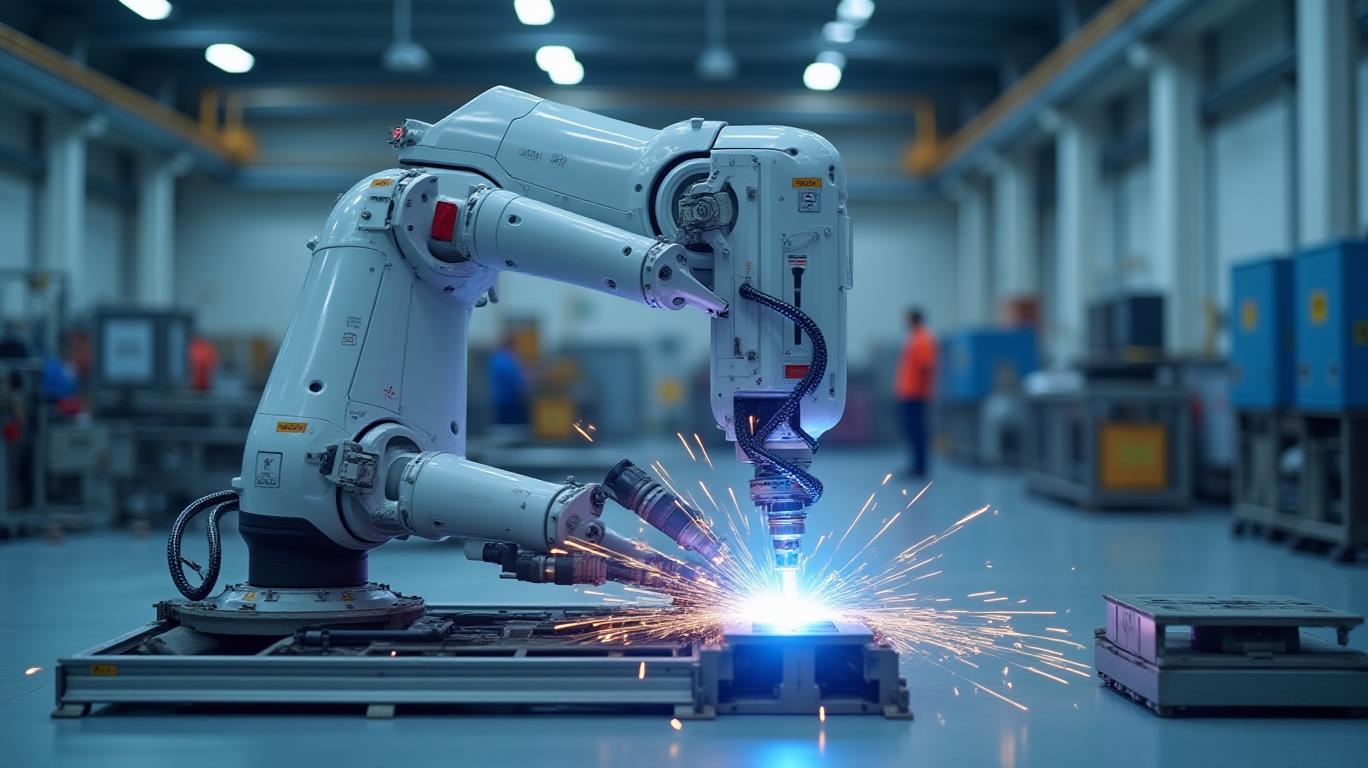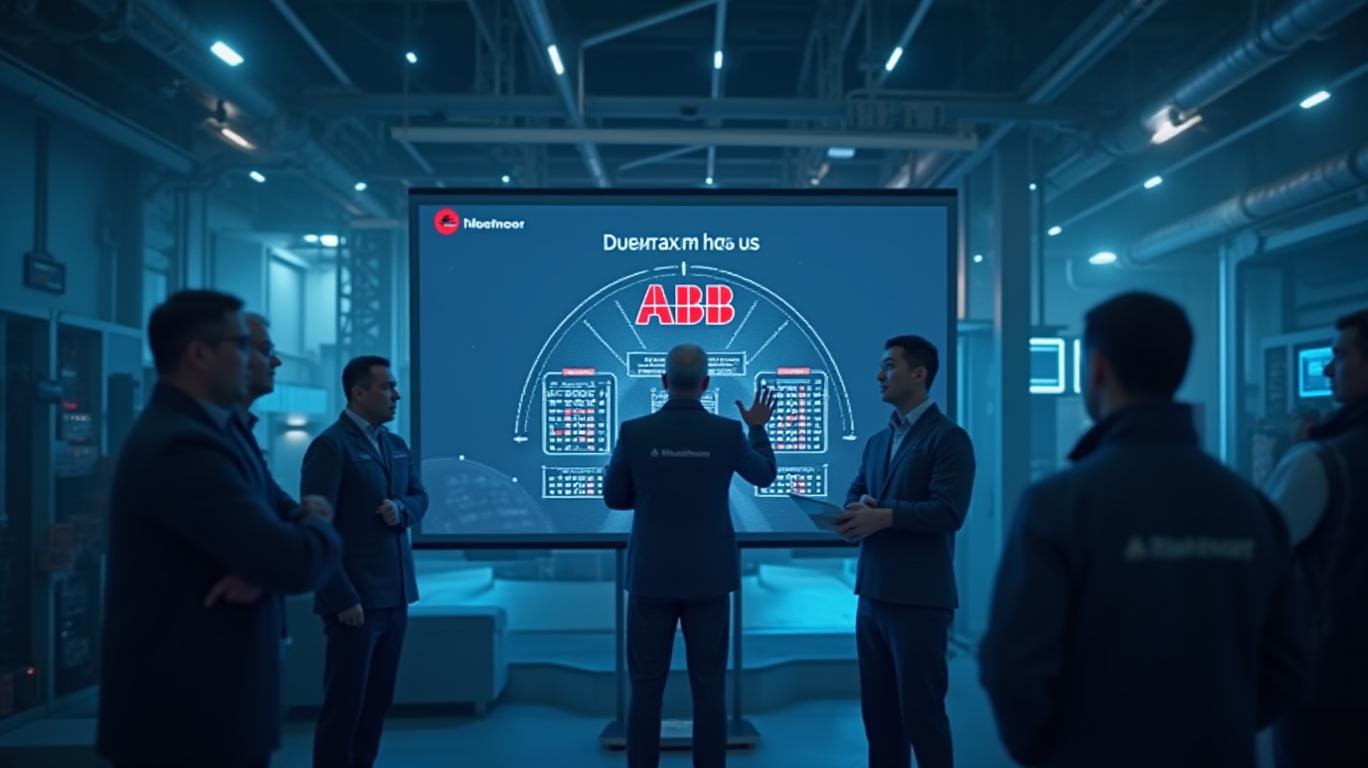ABB’s Robotics Spin-Off: A Bold Bet on the Future of Automation
The world is racing toward automation, and ABB just threw down the gauntlet. The Swiss-Swedish engineering giant announced plans to spin off its Robotics division into a standalone entity by 2026—a move that could unlock massive value for investors and position both companies to dominate their respective markets. This isn’t just a corporate reshuffle; it’s a strategic masterstroke that deserves your attention.
Why the Spin-Off Makes Sense
ABB’s Robotics division is no small operation. In 2024, it generated $2.3 billion in revenue, with a 12.1% operational EBITA margin, proving its profitability even amid global supply chain chaos. The division employs 7,000 experts and has manufacturing hubs in Sweden, China, and the U.S., enabling its “local-for-local” strategy to serve industries from automotive to healthcare. But here’s the kicker: over 80% of its offerings are software/AI-driven, making it a leader in cutting-edge automation solutions like autonomous mobile robots (AMRs) and AI-powered software platforms.
This spin-off isn’t about cutting losses—it’s about doubling down on growth. ABB’s core businesses (electrification, process automation) will benefit from laser-focused resources, while the Robotics division can accelerate innovation without the bureaucratic drag of a larger conglomerate. As CEO Morten Wierød put it, “This is about unlocking value for shareholders by letting each business thrive in its own lane.”

The Numbers That Matter
Let’s crunch some numbers. With $2.3 billion in revenue and a 12.1% EBITA margin, the Robotics division generated roughly $280 million in operating profit in 2024. Apply a 15–20x EBITA multiple (common in tech-heavy sectors), and you’re looking at a valuation of $4.2–$5.6 billion for the standalone entity. But here’s where it gets exciting: the AI/software angle could push that multiple higher. Companies like Teradyne (TER) or Brooks Automation (BRKS), which specialize in automation, trade at 25–30x forward EBITA, suggesting ABB Robotics might command a $7–$8.4 billion valuation if it hits its stride.
Meanwhile, ABB’s remaining businesses (electrification, process automation) will be free to capitalize on booming demand for sustainable energy infrastructure. The company’s Q1 2025 results showed 13% EBITA growth and a 20.2% margin, proving its core operations are firing on all cylinders.
Risks on the Horizon
No move this bold comes without risks. Global economic volatility, supply chain hiccups, and geopolitical tensions could derail both divisions. The Robotics spin-off also hinges on shareholder approval at ABB’s 2026 Annual General Meeting—a formality, but not a guarantee. Plus, while ABB’s stock has lagged this year (-13% YTD as of April 2025), the spin-off’s success will depend on investors buying into the “sum-of-the-parts” thesis.
The Bottom Line: A Buy-and-Hold Opportunity
This spin-off is a “must-watch” event for growth investors. By separating a high-margin tech leader from its industrial core, ABB is setting both up to win. The Robotics division’s AI-driven edge positions it to capitalize on megatrends like labor shortages and factory automation, while ABB’s remaining businesses are already delivering strong margins.
If history is any guide, ABB shareholders will end up with two companies instead of one—and both could be winners. I’m keeping my eyes on this one. When the spin-off happens in 2026, this could be the moment investors finally get to bet on ABB’s future… without holding back.
Final Take: ABB’s Robotics spin-off isn’t just a restructuring—it’s a bet on the future of work. Investors who stick with ABB through 2026 could reap rewards on both sides of the split. Just don’t forget to factor in the risks. This is a long game, but it’s worth playing.


_442a2dcc1749832873286.jpeg)
_e68fac6d1749831664430.jpeg)






